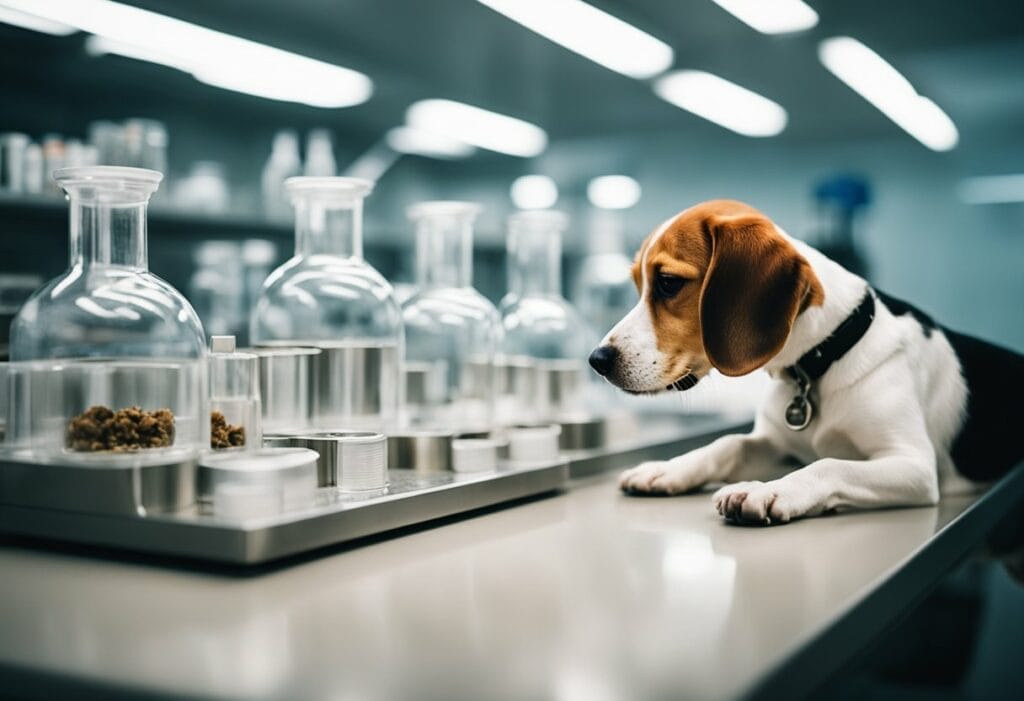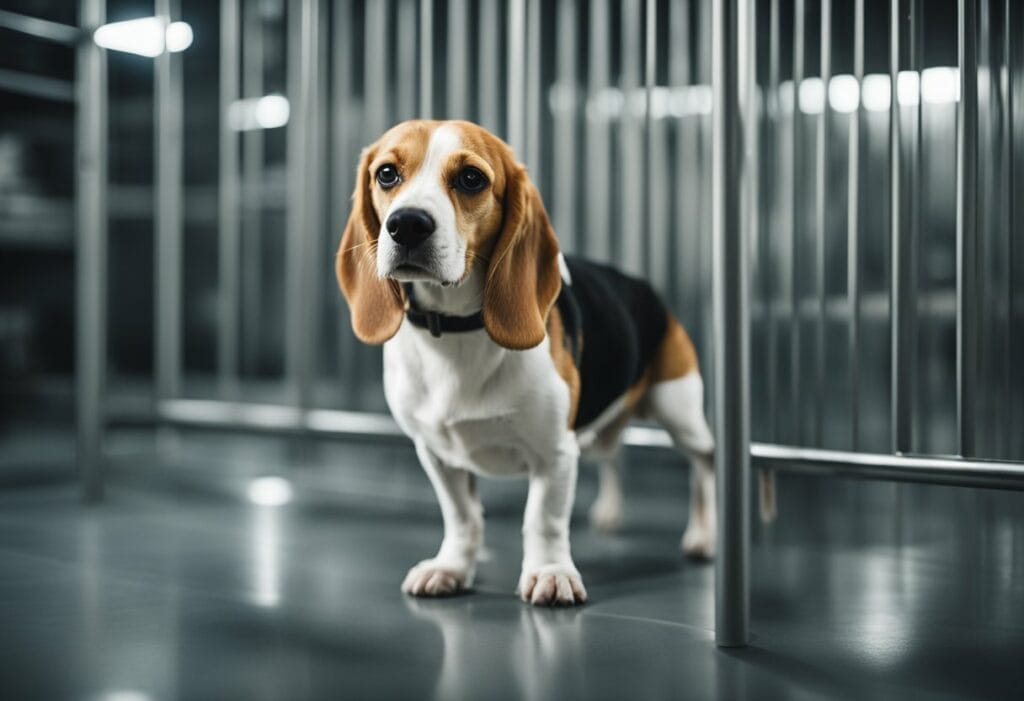Beagles are known for their friendly and curious nature, making them great pets and companions. However, they also possess an exceptional sense of smell, which has led to their use as detector dogs in various fields. One such field is illness detection, where beagles have been trained to sniff out diseases like cancer and diabetes.

As illness detection dogs, beagles have shown remarkable accuracy in identifying the scent of certain diseases. In one study, beagles were able to detect lung cancer with an accuracy rate of 97%.
These dogs are trained to detect specific scents associated with the disease, which can be present in a person’s breath, urine, or skin. By alerting their handlers to the presence of these scents, beagles can help with early detection and diagnosis of illnesses.
While beagles are not the only dogs used for illness detection, their friendly and non-threatening demeanor makes them a popular choice. They are also relatively small in size, which makes them easier to handle and transport. With their keen sense of smell and gentle nature, beagles are proving to be valuable assets in the field of illness detection.
Beagles as Illnesses Detection Dogs
As a scent hound, Beagles have an exceptional sense of smell that makes them ideal for detecting illnesses. The significance of scent in detection cannot be overstated, and Beagles are known to have the ability to detect scents at concentrations as low as one part per trillion.
This makes them ideal for detecting diseases such as lung cancer, breast cancer, and colorectal cancer, which have specific biomarkers that can be detected through scent.
Significance of Scent in Detection
Beagles are capable of detecting scents that are undetectable to humans. They have up to 300 million olfactory receptors in their noses, which is 50 times more than humans. This allows them to detect scents that are diluted or masked by other scents. In fact, Beagles have been used to detect various substances such as drugs, explosives, and agricultural products.
When it comes to detecting illnesses, Beagles can detect the specific biomarkers that are associated with the diseases. For example, lung cancer has a specific biomarker called volatile organic compounds (VOCs), which can be detected through scent. Beagles can detect these VOCs in a patient’s breath, urine, and blood, making them an effective tool in early detection of lung cancer.
Training and Certification Process
Training a Beagle to become an illness detection dog requires positive reinforcement and patience. The first step is to train the dog to recognize the scent of the specific biomarker associated with the disease. This is done through a process called imprinting, where the dog is exposed to the scent repeatedly until it can recognize it.
Once the dog can recognize the scent, it is trained to alert its handler when it detects the scent. This is done through a process called indication training, where the dog is taught to sit or lie down when it detects the scent. The handler then rewards the dog for correctly identifying the scent.
Certification for illness-detection dogs varies depending on the organization. However, most organizations require the dog to pass a series of tests to ensure its accuracy and reliability. These tests include identifying scents in a controlled environment and identifying scents in a real-world setting.
Beagle Brigade and Its Role
As an AI language model, I don’t have personal experience working with the Beagle Brigade. However, I have learned a lot about their role in detecting illnesses in fruits, foods, and plants. The Beagle Brigade is a team of dogs trained by the United States Department of Agriculture (USDA) to inspect airports and other cargo facilities for prohibited agricultural items. Their primary role is to prevent the spread of diseases and pests that could harm American agriculture.
Each Beagle goes through 13 weeks of rigorous training before starting their job. During this time, they learn to detect the scent of fruits, foods, plants, and other contraband that may be harmful to American agriculture. The Beagle Brigade handlers also undergo specialized training to work with the dogs effectively.
The Beagle Brigade is part of the USDA’s Animal and Plant Health Inspection Service (APHIS), which is responsible for protecting American agriculture from diseases and pests. The Beagles play a crucial role in this mission by detecting illegal agricultural items that could carry harmful pests and diseases. They can also help identify new pests and diseases that may not have been previously detected.
The Beagle Brigade is not limited to just airports. They also work at border crossings, international mail, and cargo facilities. They are trained to detect the scent of illegal agricultural items in suitcases, carry-on bags, and cargo containers.
Welfare and Regulations of Beagle Detection Dogs

As someone who cares about animal welfare, I understand the importance of ensuring that Beagle detection dogs are treated humanely. Fortunately, there are laws and regulations in place to protect these dogs and ensure that they are not neglected.
The National Detector Dog Training Center, for example, is responsible for training Beagle detection dogs to detect fruits, vegetables, and meats in international passenger baggage, mailed packages, and vehicles entering the United States. The center also trains other types of dogs to work in the field.
The welfare of these dogs is taken very seriously. According to the USDA, the Beagle Brigade dogs receive regular veterinary care, proper nutrition, and exercise. They are also given plenty of attention and socialization to ensure that they are happy and healthy.
The USDA Animal Care Policy Manual also provides guidelines for the care and use of animals in research, teaching, and testing. The manual outlines the responsibilities of animal care committees and requires that animal care and use be conducted in accordance with the Animal Welfare Act.
In addition to these regulations, there are also laws in place to protect Beagle detection dogs. For example, the National Institutes of Health has strict guidelines for the use of animals in federally-funded research. These guidelines ensure that the smallest possible number of subjects are used and that the animals are treated humanely.
Beagles are an effective tool in detecting illnesses such as lung cancer, breast cancer, and colorectal cancer. Their exceptional sense of smell and ability to detect specific biomarkers make them an ideal candidate for illness detection. With proper training and certification, Beagles can save lives by detecting diseases at an early stage.
